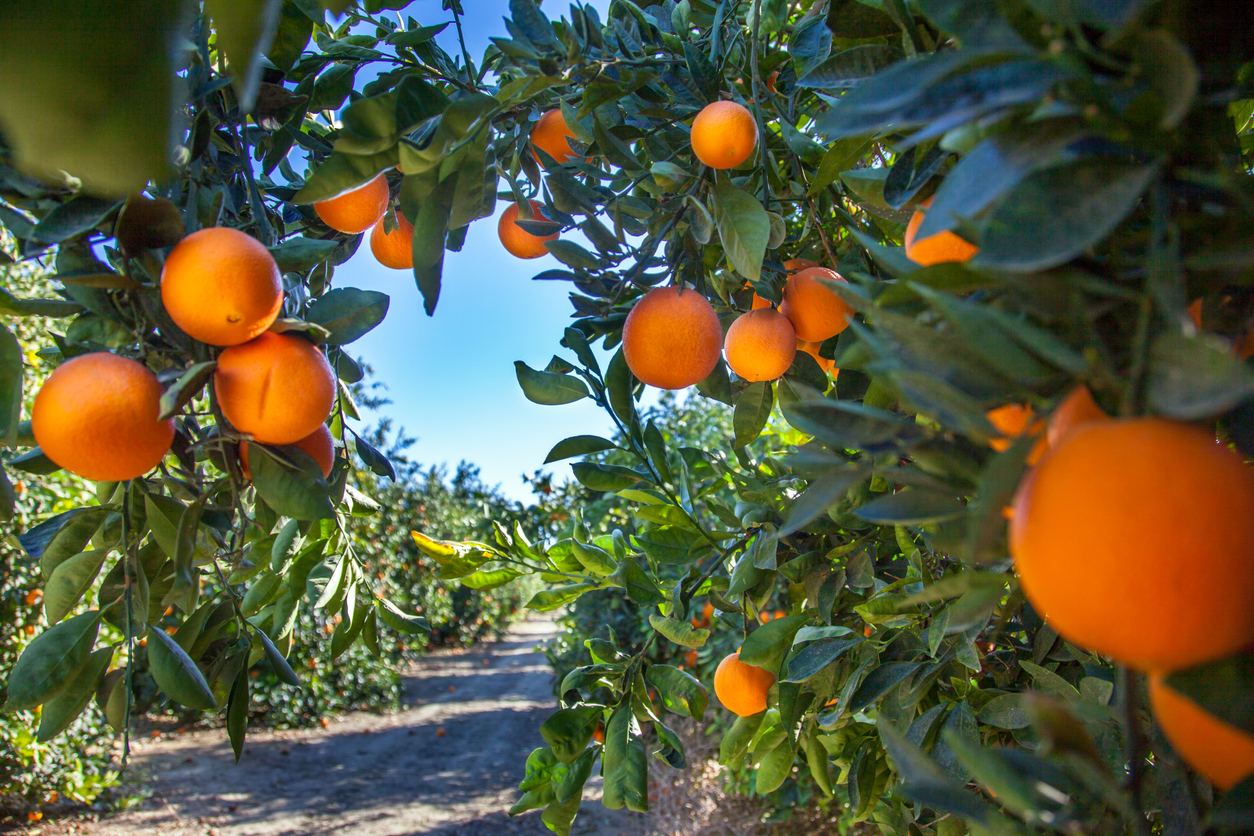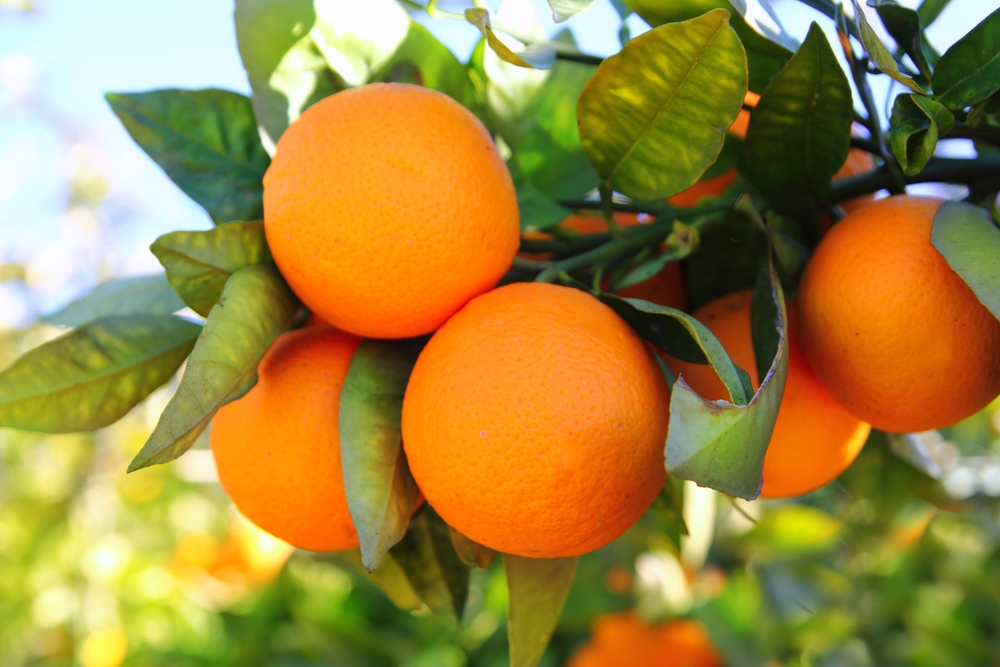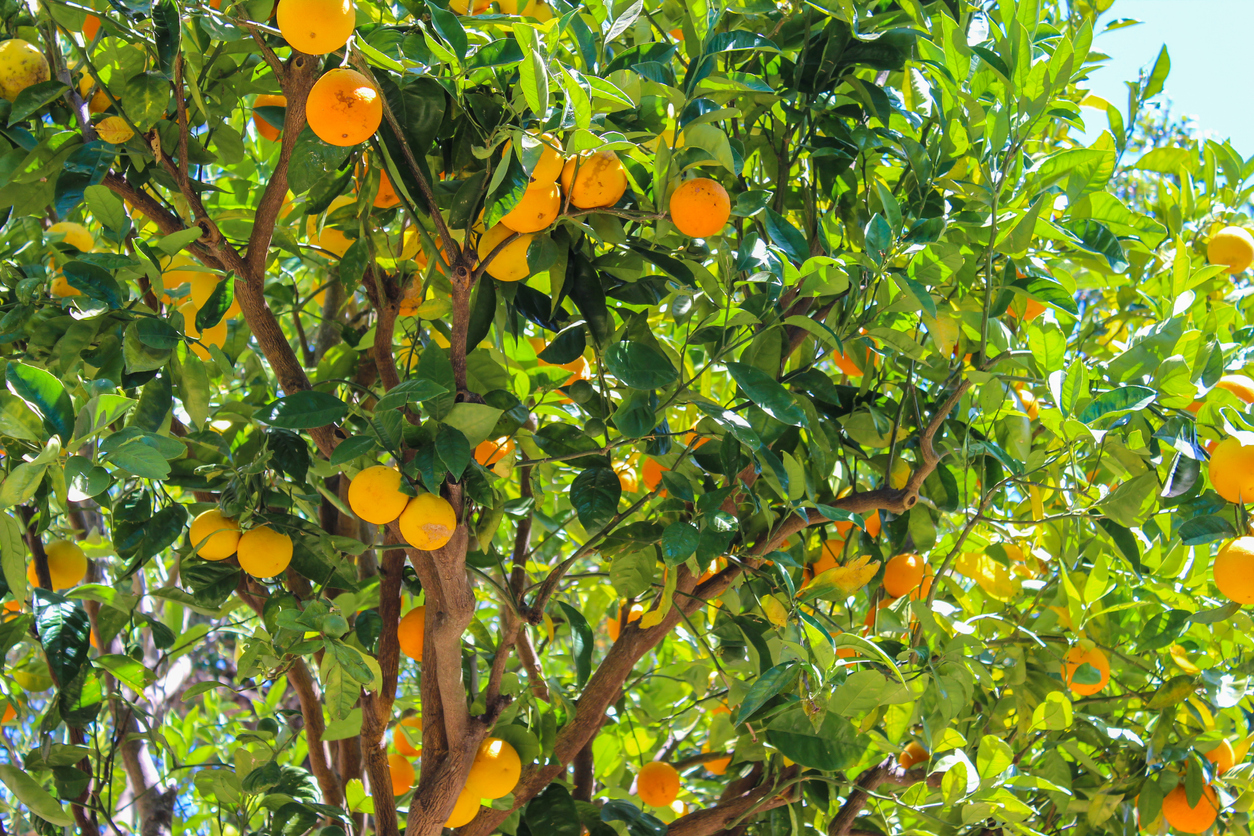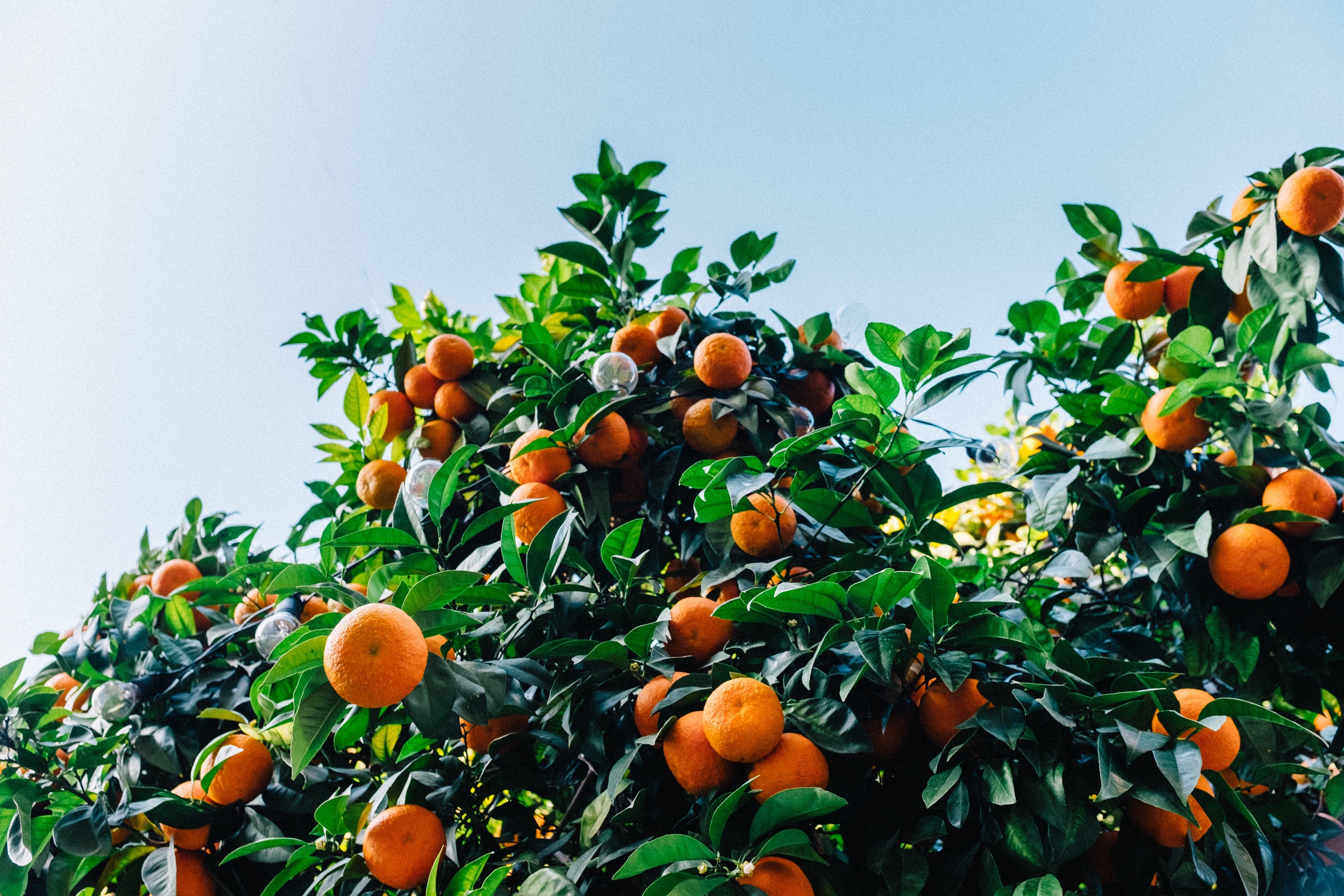What is an Orange and Where Does it Come From?
Oranges are a type of citrus fruit that are widely popular around the world. They belong to the Rutaceae family, which also includes other citrus fruits like lemons, limes, and grapefruits. Oranges are believed to have originated in Southeast Asia, particularly in southern China, northeastern India, and Myanmar. Today, they are grown in many warm and subtropical regions, including the United States, Spain, China, Brazil, and Mexico.
The Anatomy of an Orange Tree
An orange tree is a fascinating and beautiful evergreen tree that can grow up to 30 feet tall. It has a sturdy trunk, which is covered in a thick, grayish-brown bark. The branches of an orange tree are covered in dark green, shiny leaves that are arranged in an alternate pattern. These leaves are simple, oval-shaped, and have smooth edges. They measure about 3 to 4 inches long and have a leathery texture.
The roots of an orange tree are extensive and spread deep into the soil to anchor the tree and absorb water and nutrients. The roots also play a crucial role in storing energy for the tree during the dry season. The leaves and branches form a dense canopy that provides shade and shelter for the oranges as they grow.
How Oranges Develop: From Blossoms to Fruits
The life cycle of an orange begins with the blooming of beautiful, fragrant white flowers called blossoms. These blossoms are pollinated by insects, birds, and the wind, which helps to fertilize the flowers and initiate the growth of the fruit. After successful pollination, the blossoms fall off, leaving behind tiny, green oranges called ovules.
Over time, these ovules grow and develop into mature oranges. This process takes several months, and during this time, the oranges undergo significant changes in size, color, and texture. At first, the oranges are small and green, but as they mature, they become larger, heavier, and acquire their familiar orange color.
The development of oranges is a complex process that involves the coordinated growth and development of various tissues, including the outer skin (called the flavedo), the inner flesh (called the albedo), and the juicy segments (called the locules). These tissues work together to create the delicious and nutritious fruit that we all know and love.
The Growth Stages of an Orange
Oranges go through several growth stages before they are ready to be harvested. These stages can be broadly categorized into three main phases: the young fruit phase, the developing fruit phase, and the mature fruit phase.
Young Fruit Phase
During the young fruit phase, the tiny green ovules start to grow and develop into small, green oranges. This phase lasts for about 2-3 months, and during this time, the oranges are very delicate and susceptible to damage from pests, diseases, and harsh weather conditions. Farmers take great care to protect the young oranges during this critical phase.
Developing Fruit Phase
After the young fruit phase, the oranges enter the developing fruit phase. During this phase, the oranges start to grow rapidly, and their size and weight increase significantly. The skin of the oranges also starts to thicken and develop its characteristic orange color. This phase lasts for about 4-5 months, and during this time, the oranges continue to mature and develop their flavor and nutritional content.
Mature Fruit Phase
Finally, the oranges enter the mature fruit phase. During this phase, the oranges reach their full size and color, and their flavor and nutritional content are at their peak. Farmers monitor the oranges closely during this phase to ensure that they are harvested at the right time. Harvesting oranges too early or too late can affect their quality and shelf life.
Orange Tree Care and Nurturing
Orange trees, like all plants, require proper care and nurturing to grow and produce healthy fruit. Here are some key factors to consider when caring for an orange tree:
Watering
Orange trees need a regular watering schedule to thrive. They prefer well-drained soil, and overwatering can lead to root rot and other diseases. A good rule of thumb is to water the tree deeply once a week, providing enough water to soak the roots without leaving standing water.
Fertilizing
Orange trees benefit from regular fertilization, especially during their growing season. Use a balanced citrus fertilizer, following the package instructions for the size and age of your tree. Avoid over-fertilizing, as this can lead to excessive growth and reduced fruit production.
Pruning
Pruning is an important part of orange tree care. Regular pruning helps to maintain the shape and structure of the tree, promotes healthy growth, and improves fruit production. Prune the tree in the late winter or early spring, removing any dead or damaged branches and thinning out the canopy to allow for better air circulation.
Pest Control
Orange trees can be susceptible to various pests, including aphids, scale insects, and citrus leafminers. Regularly inspect the tree for signs of infestation and take prompt action if necessary. Use organic or chemical pesticides sparingly, following the manufacturer’s instructions and taking care to protect beneficial insects and pollinators.
Harvesting Oranges: When and How
Harvesting oranges is an exciting time for both farmers and consumers. Knowing when and how to pick oranges is crucial to ensure their quality and longevity. Here are some tips on harvesting oranges for kids to understand:
When to Harvest Oranges
Oranges are typically ready to be harvested between late fall and early spring. However, the exact timing depends on the variety and growing conditions. A general rule of thumb is to wait until the fruit is fully colored and slightly soft to the touch. Oranges that are harvested too early may not be as sweet or juicy as those that are allowed to ripen on the tree.
How to Harvest Oranges
Harvesting oranges requires a gentle touch. The best way to pick an orange is to twist and pull it gently from the tree. Avoid pulling or yanking the fruit, as this can damage the tree and reduce future yields. If the orange does not come off easily, it may not be ripe yet. In some cases, farmers may use a small tool called a “fruit picker” to harvest oranges that are high up in the tree.
Ripe vs. Unripe Oranges
It is important to be able to distinguish between ripe and unripe oranges. Ripe oranges are fully colored, slightly soft to the touch, and have a sweet aroma. Unripe oranges, on the other hand, are green, hard, and have a tart or bitter taste. It is best to leave unripe oranges on the tree to continue ripening, as they will not continue to ripen once picked.
Best Time to Harvest Oranges
The best time to harvest oranges is early in the morning, before the heat of the day sets in. Oranges picked in the morning are cooler and have a higher moisture content, which helps to preserve their quality during transportation and storage.
From Orchard to Table: The Journey of Oranges
Oranges go through a fascinating journey from the orchard to your table. After being carefully harvested, oranges undergo several post-harvest processes to ensure their quality and safety. Here’s an overview of the journey of oranges for kids to understand:
Sorting and Grading
After harvesting, oranges are sorted and graded based on their size, color, and quality. This process ensures that only the best oranges make it to the market. Oranges that do not meet the quality standards are often used for juice or other products.
Washing and Sanitizing
Oranges are then washed and sanitized to remove any dirt, bacteria, or other contaminants. This step is crucial in ensuring the safety and quality of the oranges. The washing process typically involves a gentle spray of water and a food-grade sanitizer.
Packing and Transportation
After being washed and sanitized, oranges are carefully packed and prepared for transportation. The packing process involves placing the oranges in trays or cartons to prevent bruising and damage. Once packed, the oranges are transported to distribution centers, where they are sorted and shipped to supermarkets and other retailers.
Distribution and Retail
Oranges are distributed to supermarkets and other retailers through a complex network of distributors, wholesalers, and transportation companies. Once at the retail level, oranges are displayed in produce sections and available for purchase by consumers. It is important to choose oranges that are heavy for their size and have a smooth, firm skin.
From Supermarket to Home
When you bring oranges home from the supermarket, it is important to store them properly to maintain their quality. Oranges should be stored in a cool, dry place away from direct sunlight. If you plan to eat the oranges within a few days, you can store them at room temperature. However, if you want to keep them fresh for a longer period, you can store them in the refrigerator.
Enjoying Oranges: Nutritional Benefits and Fun Facts
Oranges are not only delicious and juicy, but they are also packed with essential nutrients that are beneficial for our health. Here are some of the nutritional benefits of oranges and fun facts that kids will enjoy:
Nutritional Benefits
Oranges are an excellent source of vitamin C, a powerful antioxidant that helps to boost the immune system and protect the body from harmful free radicals. They also contain fiber, potassium, and folate, which are important for maintaining good health. Oranges are low in calories and have a high water content, making them a great snack for kids and adults alike.
Fun Facts
Did you know that oranges are actually a type of berry? Or that the world’s heaviest orange weighed over 7 pounds? Oranges are also a popular symbol of good luck and prosperity in many cultures. In China, oranges are often given as gifts during the Lunar New Year to bring happiness and wealth in the coming year.
Sustainable Farming Practices
Orange growers around the world are increasingly adopting sustainable farming practices to reduce their environmental impact and promote biodiversity. These practices include using natural pest control methods, reducing water usage, and planting cover crops to improve soil health. By supporting sustainable farming practices, we can help to ensure that oranges will continue to be a healthy and delicious snack for generations to come.
Encouraging Kids to Appreciate Oranges
Oranges are a fun and healthy snack for kids to enjoy. Encourage them to try different varieties of oranges and to appreciate the fascinating process of how they grow. By teaching kids about the importance of sustainable farming practices, we can help to promote a healthy planet and a healthy lifestyle.








